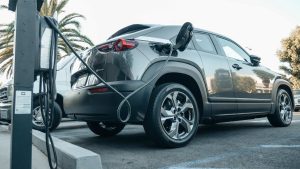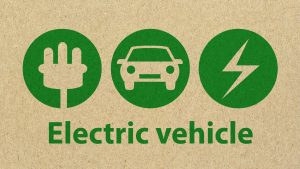Are you considering making the switch to an electric vehicle (EV) but concerned about the cost? Did you know that Canada offers generous subsidies to make EV ownership more accessible?
From federal incentives to provincial rebates, these programs are designed to reduce the financial burden of purchasing or leasing a zero-emission vehicle.
By combining federal and provincial support, buyers can save thousands of dollars while contributing to a greener future. But how do these subsidies work, and what do you need to qualify?
In this guide, we’ll explore everything you need to know about electric vehicle subsidies in Canada to help you make an informed and eco-friendly decision.
Understanding Electric Vehicle Subsidies in Canada

Electric vehicle (EV) subsidies are financial incentives provided by governments to encourage the adoption of environmentally friendly, zero-emission vehicles.
These subsidies aim to make EVs more affordable for Canadians, bridging the cost gap between electric and conventional vehicles.
By lowering the upfront expenses, these programs support Canada’s broader goals of reducing greenhouse gas emissions and achieving a more sustainable transportation network.
Key Features of EV Subsidies
- Types of Assistance: These can include direct purchase rebates, tax credits, or grants for charging infrastructure.
- Focus on Zero-Emission Vehicles: Subsidies primarily target vehicles like battery electric vehicles (BEVs), plug-in hybrids (PHEVs), and hydrogen fuel cell vehicles (HFCVs).
- Promotion of Green Transportation: EV subsidies are part of Canada’s strategy to reduce reliance on fossil fuels.
Why Subsidies Matter?
- Environmental Benefits: EVs produce fewer emissions, contributing to cleaner air and combating climate change.
- Economic Incentives: By subsidizing EVs, governments make these advanced technologies more accessible to the average consumer.
- Consumer Awareness: These programs help educate Canadians about sustainable choices.
In Canada, federal and provincial governments collaborate to offer a range of subsidies tailored to meet local demands and environmental goals. Understanding these subsidies is crucial for buyers seeking to make an informed, eco-conscious decision.
Federal Incentives for Electric Vehicles

The Canadian federal government has implemented robust initiatives to make electric vehicles (EVs) more affordable and accessible to citizens. At the heart of these efforts are the Incentives for Zero-Emission Vehicles (ZEV) Program, which offers financial support for purchasing or leasing eligible zero-emission vehicles.
Key Features of the iZEV Program
- Subsidy Amounts:
- Up to $5,000 for battery electric vehicles (BEVs) and hydrogen fuel cell vehicles (HFCVs).
- Up to $2,500 for plug-in hybrid electric vehicles (PHEVs) with an electric range of less than 50 km.
- Eligibility Requirements:
- Applies to new vehicles purchased or leased for at least 12 months.
- The vehicle must be on the approved iZEV list to qualify for the subsidy.
How to Access Federal Incentives?
- Consumers typically receive the incentive directly at the point of sale from the dealership.
- The dealership deducts the rebate from the vehicle price and claims reimbursement from the federal government.
Benefits of Federal EV Incentives
- Affordability: Reduces the upfront cost of eco-friendly vehicles.
- Accessibility: Encourages a wider demographic to explore EV options.
- Environmental Impact: Supports Canada’s commitment to reaching net-zero emissions by 2050.
Federal incentives reflect the government’s dedication to fostering sustainable practices while promoting cleaner transportation alternatives. Buyers are encouraged to explore the iZEV program when making their next vehicle purchase to leverage these benefits effectively.
Provincial Support Programs for EV Buyers

In addition to federal incentives, Canadian provinces offer their own financial assistance programs to promote electric vehicle (EV) adoption.
These subsidies vary by region, reflecting local priorities and environmental strategies. Together, federal and provincial programs create a comprehensive support system for EV buyers across the country.
Provincial Incentive Highlights
| Province | Incentive Amount | Program Details |
| Quebec | Up to $7,000 | Offered through the “Roulez vert” program for new EV purchases or leases. Includes additional support for home chargers. |
| British Columbia | Up to $4,000 | The CleanBC Go Electric Program provides rebates for battery electric vehicles and PHEVs. |
| Ontario | Up to $1,000 (used EVs) | Focused on rebates for used EVs under specific conditions. |
| Nova Scotia | Up to $3,000 | Part of the Electrify Nova Scotia Rebate Program. |
Key Details About Provincial Programs
- Varied Incentives: Quebec and British Columbia lead with higher rebate amounts, while other provinces offer modest financial support.
- Home Charging Support: Certain provinces, like Quebec, provide additional incentives for purchasing and installing home charging equipment.
- Eligibility: Programs typically apply to new and, in some cases, used EVs, with specific criteria for eligible vehicles.
Benefits of Provincial Programs
- Regional Focus: Tailored to local needs and environmental goals.
- Enhanced Savings: When combined with federal rebates, provincial incentives significantly reduce the overall cost of EV ownership.
- Support for Green Infrastructure: Encourages the development of EV-friendly facilities such as charging stations.
Provincial programs complement federal subsidies, providing Canadians with robust financial assistance for transitioning to zero-emission vehicles. Buyers should explore both levels of incentives to maximize their benefits.
How to Apply for an EV Subsidy in Canada?

Applying for an electric vehicle (EV) subsidy in Canada is a critical step in reducing the overall cost of your zero-emission vehicle. The process is designed to be simple but varies depending on whether you are applying for federal or provincial incentives. Here’s a detailed guide to ensure a smooth experience.
Federal Subsidies (iZEV Program)
The Incentives for Zero-Emission Vehicles (iZEV) Program offers subsidies directly at the dealership level. When purchasing or leasing an eligible vehicle, the dealership automatically applies the rebate to the vehicle price.
- Choose an Eligible Vehicle: Verify that the vehicle is listed under the iZEV eligibility list, which is regularly updated by the federal government. The list includes qualifying battery electric vehicles (BEVs), plug-in hybrid electric vehicles (PHEVs), and hydrogen fuel cell vehicles (HFCVs).
- Complete the Purchase or Lease: Once you’ve selected your EV, the dealership applies the incentive immediately during the transaction. The dealership then claims the rebate directly from the government, meaning no separate application is required on your part.
- Keep Your Documentation: Ensure you retain all purchase agreements, receipts, and vehicle registration records as proof of the transaction.
Provincial Subsidies
Provincial programs differ by region and may require separate applications after your EV purchase. Here’s a step-by-step overview for key provinces:
- Check Provincial Eligibility Requirements: Visit your provincial government’s website to identify eligible vehicles and confirm specific criteria. For example, Quebec’s “Roulez vert” program and British Columbia’s CleanBC Go Electric program each have their own rules for rebates.
- Purchase or Lease the Vehicle: While some provincial incentives are applied at the dealership, others, like Quebec’s, may require the buyer to submit a claim post-purchase.
- Submit Your Application: For provinces requiring separate applications, you’ll need to complete an online form through the provincial government portal. Attach required documents such as:
- Proof of purchase or lease agreement.
- Vehicle registration information.
- Additional residency proof, depending on the province.
- Await Reimbursement: After submitting your application, the provincial government reviews it, and approved rebates are reimbursed directly to you. Processing times vary by program.
Important Tips for Applicants
- Research All Programs: Check both federal and provincial incentives to maximize your savings.
- Act Quickly: Some programs operate on limited budgets and are available on a first-come, first-served basis.
- Seek Assistance: Dealers often have expertise in handling both federal and provincial subsidies and can guide you through the process.
By understanding the requirements and preparing in advance, you can seamlessly apply for EV subsidies and enjoy the financial benefits of transitioning to an environmentally friendly vehicle.
Benefits of Electric Vehicle Subsidies

Electric vehicle (EV) subsidies offer several advantages, making them a vital component of Canada’s push toward sustainable transportation. These benefits extend beyond individual savings, creating a ripple effect across economic, environmental, and societal dimensions.
Major Benefits of EV Subsidies
- Cost Savings for Buyers:
- Federal and provincial subsidies significantly lower the upfront cost of EVs.
- Combined incentives can reduce purchase prices by up to $12,000, depending on the province.
- Environmental Impact:
- Increased adoption of EVs helps reduce greenhouse gas emissions.
- Promotes the transition from fossil fuel dependence to renewable energy sources.
- Market Growth:
- Encourages automotive manufacturers to expand EV production.
- Drives innovation in green technology and infrastructure, such as charging stations.
Economic Advantages
- Job Creation: Subsidy programs support industries tied to EV technology, such as battery manufacturing and infrastructure development.
- Long-Term Savings: EVs typically have lower maintenance and fuel costs compared to gasoline-powered vehicles.
By lowering financial barriers, subsidies empower Canadians to make sustainable choices that benefit both the individual and the planet.
Challenges and Limitations of Current Subsidy Programs

While electric vehicle subsidies in Canada have been instrumental in promoting green transportation, certain challenges and limitations persist. Addressing these issues is essential for ensuring long-term success and accessibility.
Key Challenges
- Limited Funding:
- Subsidy programs often operate on capped budgets, leading to limited availability as funds are exhausted.
- Federal and provincial governments may face challenges in sustaining these programs amidst competing priorities.
- Regional Disparities:
- Incentives vary significantly by province, creating unequal access to financial support.
- Provinces like Quebec and British Columbia offer substantial rebates, while others provide minimal assistance.
- Affordability Gap:
- Despite subsidies, EVs remain costly for lower-income households.
- Limited affordable EV options on the market hinder broader adoption.
How Challenges Impact Consumers?
- Reduces access to subsidies for late applicants.
- Creates confusion about eligibility and application processes.
- Slows the adoption rate, particularly in underserved regions.
Addressing these limitations requires coordinated efforts between federal and provincial governments to ensure equitable and sustainable programs.
Conclusion
Electric vehicle subsidies in Canada play a crucial role in making sustainable transportation more accessible and affordable. With federal programs like the iZEV initiative and a variety of provincial rebates, Canadians can significantly reduce the upfront cost of purchasing or leasing a zero-emission vehicle.
These incentives not only benefit individual buyers by lowering costs but also support national goals of reducing greenhouse gas emissions and promoting cleaner energy use.
Whether you’re looking for financial savings, environmental impact, or both, these subsidies provide an excellent opportunity to make the switch to an EV. Explore the available programs today and drive toward a greener, more sustainable future.
FAQs About Subvention Véhicule Électrique Canada
What types of vehicles qualify for EV subsidies in Canada?
Subsidies apply to zero-emission vehicles (ZEVs), including battery electric vehicles (BEVs), plug-in hybrid electric vehicles (PHEVs), and hydrogen fuel cell vehicles (HFCVs). Each program maintains a list of eligible models, which is updated periodically.
Can I combine federal and provincial subsidies for an EV?
Yes, buyers can stack federal incentives, such as the iZEV rebate, with provincial subsidies. This combination often provides substantial savings, significantly reducing the overall cost of purchasing or leasing an electric vehicle.
Do I need to apply for the federal iZEV program separately?
No, the federal incentive is applied directly at the dealership when purchasing or leasing an eligible vehicle. The dealer handles the paperwork, and the rebate is deducted from the price.
Are there subsidies available for used electric vehicles?
Some provinces, such as Ontario, offer rebates for used electric vehicles. However, federal incentives through the iZEV program are exclusively for new vehicle purchases or leases.
Can businesses or fleets apply for EV incentives?
Yes, certain programs include incentives for businesses purchasing electric fleet vehicles. These programs often have additional criteria, such as fleet size and vehicle usage.
Is there financial support for home charging stations?
Yes, some provinces, like Quebec, offer additional rebates for purchasing and installing home charging stations. These incentives aim to encourage the development of EV infrastructure.




